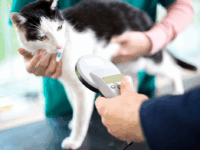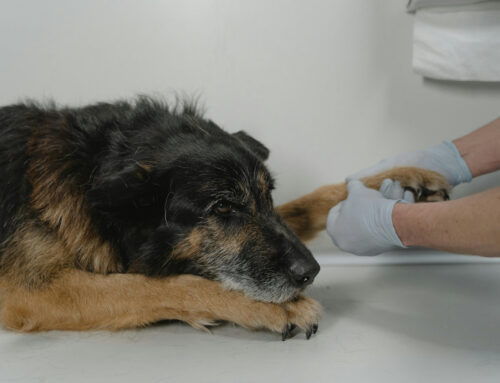
Losing a pet is a heart-stopping experience no animal lover ever wants to face. Whether it’s a curious cat slipping through a cracked door or a dog spooked by fireworks jumping the fence, pets can disappear in seconds — and the emotional toll is immense. At Cuddly Critters Pet Sitting, we care deeply about your pets and want to help you prevent the unthinkable. With a few proactive steps, you can dramatically reduce the risk of your furry (or feathered!) friend becoming lost.
This guide offers everything you need to know about keeping your pet safe at home, as well as what to do if you ever find a pet in need of help.
How to Prevent Your Pet From Getting Lost
Make Sure Your Pet Has Proper Identification
Even the most well-behaved, homebody pets can get startled or curious and bolt unexpectedly. One of the most effective tools in pet recovery is identification. A collar with a current ID tag is a pet’s first line of defense. Make sure the tag includes your phone number — and double-check that it’s legible and up to date.
For dogs, a well-fitted flat collar or harness with a tag is essential. For cats, use a breakaway collar designed to come off safely if it gets caught. Indoor-only cats especially benefit from this, as they often have no identification and can easily get overlooked as strays.
Even better? Get your pet microchipped. A microchip is a tiny device (about the size of a grain of rice) implanted under the skin that stores your contact information. It can’t fall off or be removed like a tag, and it lasts for your pet’s lifetime. Just make sure to register the chip with your contact info and keep it updated if you move or change your phone number. It’s amazing how many pets are chipped but never reunited because the owner’s information isn’t current.
Check for Escape Routes at Home
Before letting your pet roam freely in your yard or even in certain areas of your home, take a few minutes to inspect for potential escape points. For dogs, that might mean checking fences for loose boards, gaps at the bottom, or unlocked gates. Some dogs are diggers or jumpers and may need extra reinforcement, like barrier landscaping or taller fencing.
Cats are climbers and squeeze artists. A cracked window, loose screen, or door left open for just a second is all it takes for a cat to vanish. Indoor-only cats are especially vulnerable outside since they may not know how to navigate the unfamiliar territory.
For smaller animals like birds, guinea pigs, or reptiles, it’s critical to check cages and tanks daily to ensure latches and lids are fully secure. If you allow supervised playtime outside their enclosures, make sure the environment is escape-proof and they’re always supervised.
Be Extra Careful During Travel
Transporting pets in and out of cars can be risky — even for a quick trip to the vet or groomer. Cats should always be placed in secure carriers, with the door latched and no opportunity for escape. Small dogs, rabbits, and other animals should also travel in carriers.
For larger dogs, use a harness or safety belt designed for car travel. And never open your car door until your dog is securely leashed. A scared or excited dog can leap out before you even know what’s happening.
Pro tip: practice car travel with your pet in low-stress settings so they’re used to the routine and less likely to panic during the real thing.
Spay or Neuter Your Pets
Intact animals (not spayed or neutered) are much more likely to roam in search of a mate. It’s part of their natural instinct, and it can put them in dangerous situations — crossing roads, approaching other animals, or wandering far from home. Fixing your pet not only helps prevent unwanted litters but also reduces their urge to escape and lowers their risk of becoming lost.
Secure Small Pets Too
It’s not just dogs and cats that need protection. Birds can fly out open windows in an instant. Rabbits and guinea pigs can squeeze through fence gaps or chew through weak enclosures. Reptiles like turtles and snakes are notorious escape artists.
If your pet is allowed out of its cage for playtime, always supervise them. Use pens, secure rooms, or specially designed leashes or harnesses (some bunnies and reptiles can be leash trained!). The goal is to ensure they can explore without any risk of disappearing.
What to Do If You Find a Lost Pet
If you come across a wandering dog, cat, or other animal, here’s how you can help them find their way home:
Approach Gently and Stay Calm
Lost animals may be scared or confused. Approach slowly and speak softly. Avoid chasing or grabbing — this can make them run or become defensive. If you have treats or food, that can help you build trust. If the animal runs, try to keep track of its location and contact animal control for help.
Look for a Collar or ID Tag
If the pet seems friendly and allows you to get close, check for a collar and ID tag. Many lost pets are reunited quickly just by calling the number listed on the tag. Some tags also have QR codes that link directly to the pet’s online profile.
Take Them to Be Scanned for a Microchip
If there’s no visible ID, don’t give up. Many pets are microchipped, and a quick scan can provide the owner’s contact information.
You can take the pet to any of the following places for a free microchip scan:
- Veterinary Clinics – Most local vets will scan pets, even if you’re not a client.
- Animal Shelters – Humane societies and rescue centers typically have scanners on-site.
- Emergency Veterinary Hospitals – Especially useful after regular business hours.
- Pet Stores – Larger pet chains like Petco and PetSmart may have staff who can scan for a chip.
It’s always a good idea to call ahead and confirm availability. Bring the pet in a carrier or on a leash to ensure everyone’s safety.
File a Found Pet Report and Post Online
If there’s no microchip or ID, don’t worry — you still have options. Post a clear photo of the pet along with the location and time you found them. Be sure to check and post on:
- Facebook Groups for lost and found pets in your area
- Nextdoor – great for alerting neighbors quickly
- PawBoost – a free pet alert site that helps spread the word
- Your local animal control or shelter’s website
These efforts can make all the difference in getting a lost pet back home.
We’re Here to Support Safe, Happy Pets
At Cuddly Critters Pet Sitting, we know your pets are part of your family — and their safety is our top priority. When we care for your animals, whether it’s for daily visits or overnight stays, we take precautions to keep them safe and secure. We triple-check doors, gates, leashes, and enclosures to prevent accidents. If you ever need help setting up a safer space for your pets or have questions about microchipping, tags, or safety gear, we’re always happy to share resources.
Losing a pet is scary — but with preparation, awareness, and community support, we can prevent many of these heartaches before they happen.
If you’d like help preparing for travel, updating your pet’s ID info, or have any safety concerns you’d like to address before your next trip, reach out to us — we’re here to help you feel confident and prepared every step of the way.






